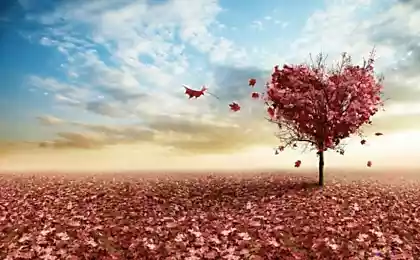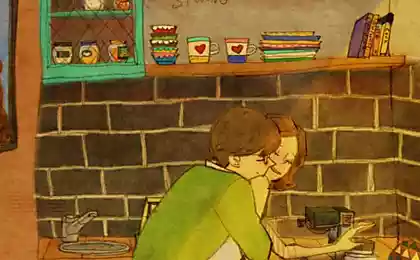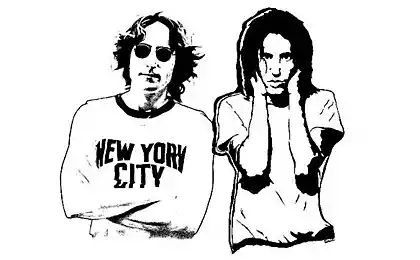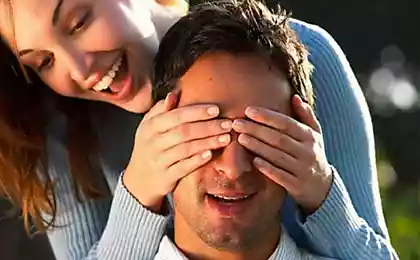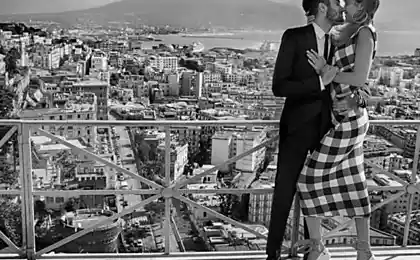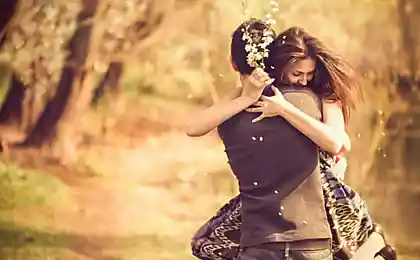764
A terrible love of the exotic
"Turtle meat can cure cancer!" - Is a belief exists in China. In the markets in many Asian countries is full of exotic animals, which are destined to go to restaurants, pharmacies and private collectors. China and Vietnam - two countries with a special taste for the exotic animals and plants threatened with extinction.
15 photos are not for the faint hearted, via bigpicture
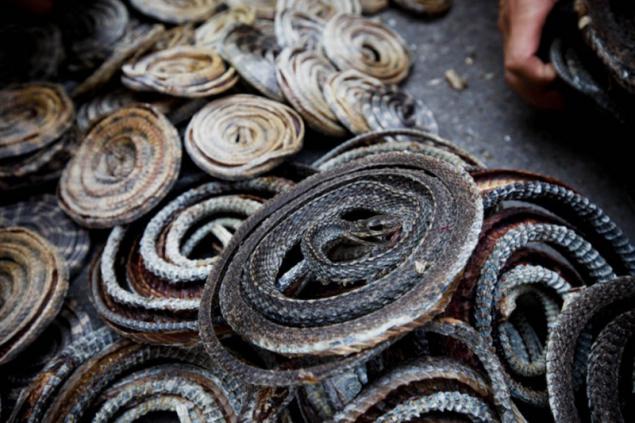
2. Protection of wildlife includes, as one of the components, active measures for the control of wildlife trade and combating smuggling. Success in this area depends largely on concerted action at the international level.
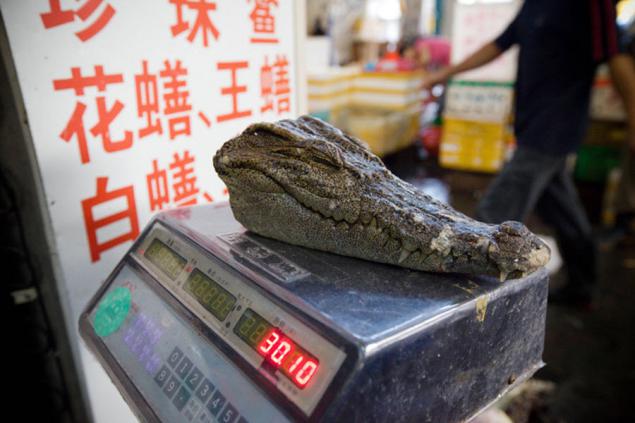
3. Among the countries that are experiencing a massive uncontrolled trade in wild animals should be allocated to Vietnam.
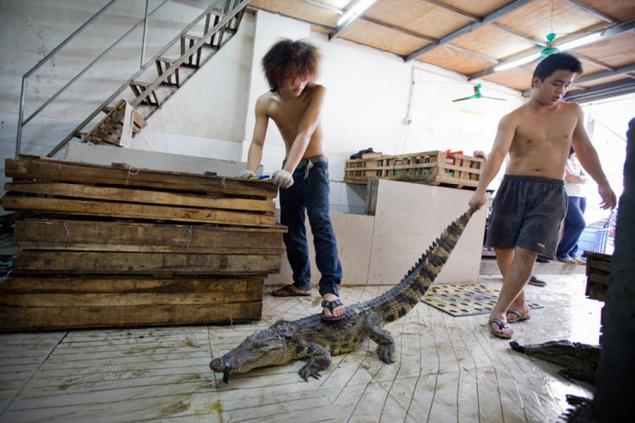
4. In Hanoi, in the Chinese district of Lan Ong Street, many shops sell items of traditional Chinese medicine: in addition to herbs, you can buy a reindeer oil to treat back, skeletons of monkeys for the preparation of an analgesic, pangolin scales for the treatment of skin and dried geckos as a means to increase potency (aphrodisiacs).
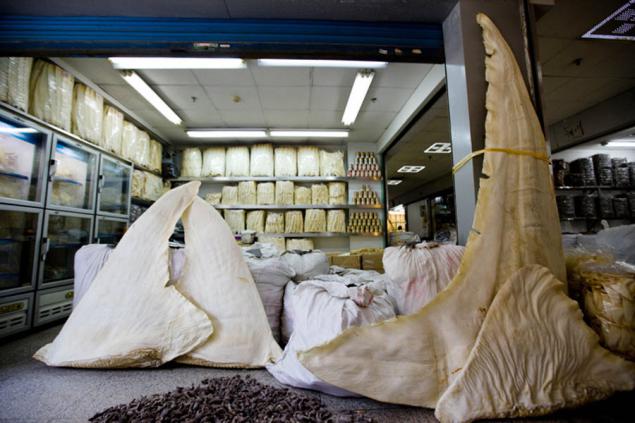
5. Beach coast, such as Vung Tau, at the weekend visited by foreign guests. Kiosks along the coast, sell a variety of products and handicrafts to tourists. In Vung Tau anyone can buy a pig tooth (0, $ 3 for each), tortoiseshell bracelets (7 $), tiger claws with silver buckles ($ 10), whole tortoise shell ($ 26), stuffed pangolin ($ 30) stuffed turtles ($ 50) and tortoiseshell eyeglass frames ($ 50).
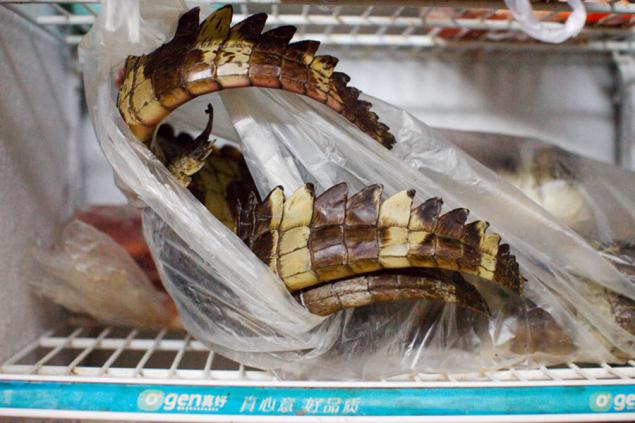
6. Chinatown Holon Ho Chi Minh City a significant number of Chinese traders are engaged in the sale of medical products, especially from the field of traditional Chinese pharmacology, and live animals and their products. Such shops Chinese are very similar to those found in other countries in Southeast Asia. In the area of Holon item comes a lot of buyers from China.
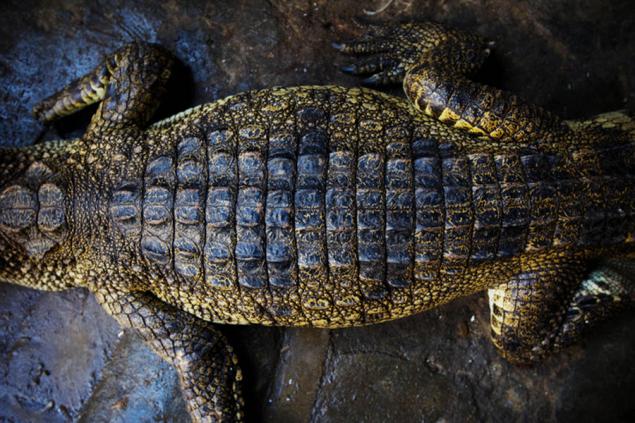
7. The exact prices for animals that are protected by the law is difficult to determine, since the transaction on the sale of protected species are secretive. The prices depend on the regularity of contacts between buyers and sellers, the market demand and the ability to bring down the price of the buyer. As a rule, the price of the animal almost doubled from the local border area to the mediator, then to the merchant or buyer in town.
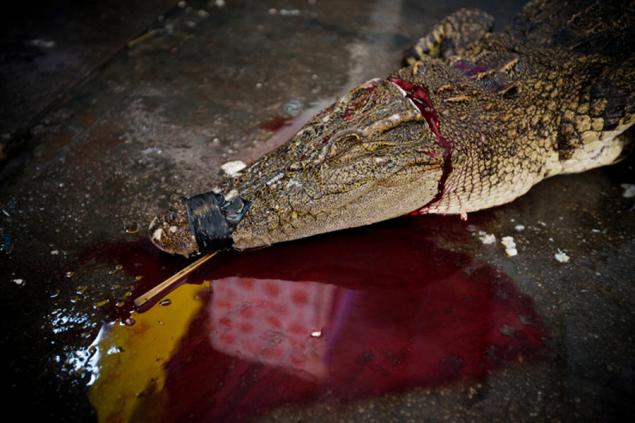
8. In Nanning (the capital of Guangxi province) in the numerous restaurants offer visitors inexpensive dishes from exotic animals. These dishes are mostly meat aquatic lizards, Chinese Giant Salamander, pangolins, snakes and turtles. These menus offer mostly businessmen and tourists from Guangdong and other provinces of China, as well as from Hong Kong and Taiwan.
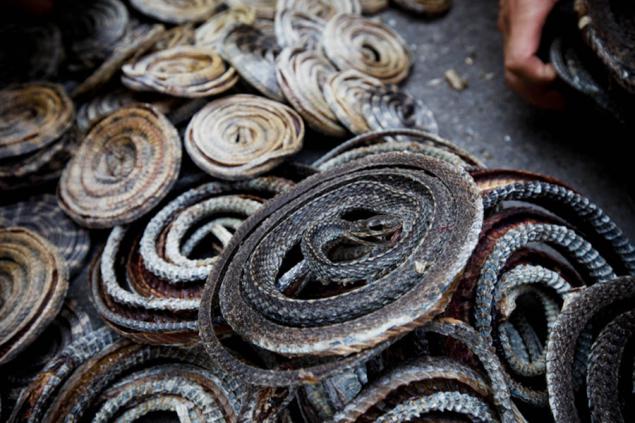
9. Goods made of tortoiseshell, commonly seen in antique shops. Tortoiseshell in the form of raw materials are sourced from Singapore or Vietnam itself costs about $ 132 per 1 kg. The main buyers of such products are the Japanese, who are quite satisfied with the price. The hotel Ho Chi Minh stores selling a variety of number of fairly high quality goods from the shells of turtles.
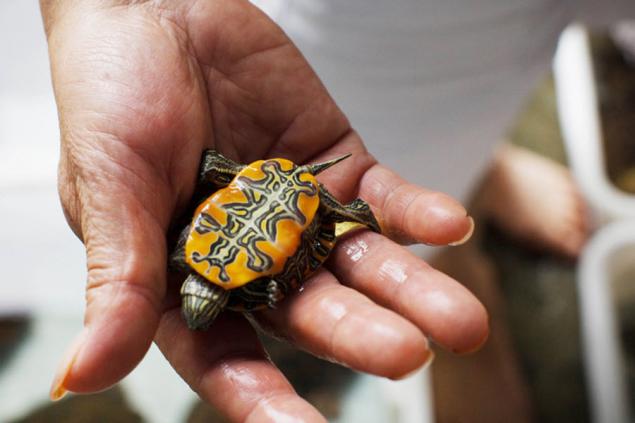
10. Nevertheless, the smuggling of animals is often cut short, and the animals confiscated employees of state environmental organizations and services. However, the ability to gain control over the protection of animals, anti-poaching and smuggling can not be improved due to capacity constraints. A particular problem is the content of the confiscated animals: a shortage of specialists and funding of the animals produced in large quantities without a veterinary health inspection and quarantine period, there is no technical support and planning.
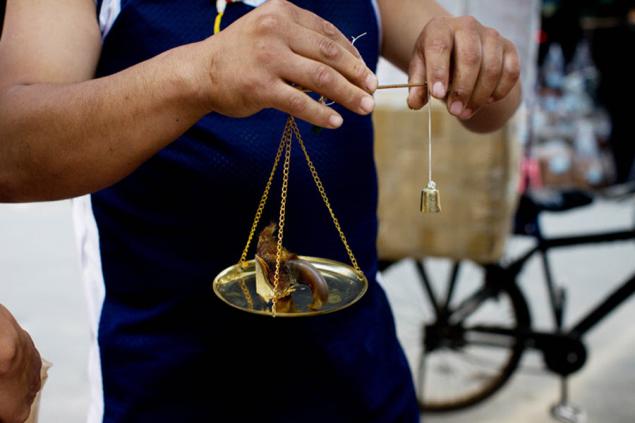
11. The most expensive animal products sold in health stores Holon, are not only rhino horn, and antler, tortoise-shell, tiger bones and teeth of pigs.
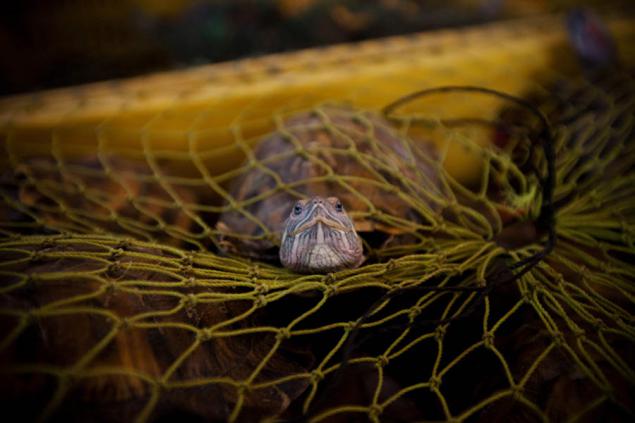
12. According to statistics, nearly a third of the offered dishes prepared from animals, under the protection of the law. The price of these meals is 20 times higher than usual.
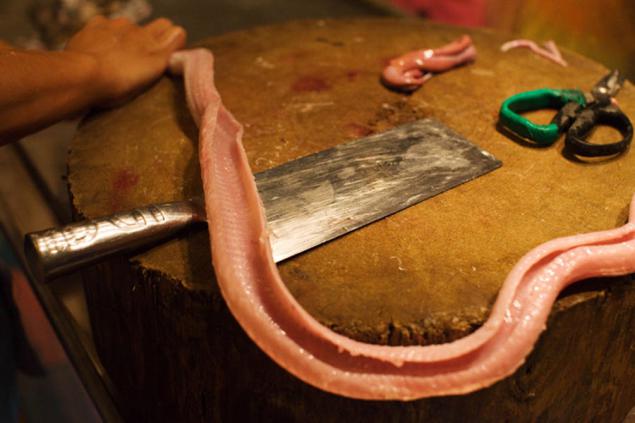
13. In many street stalls also sell live animals, but mostly for the food. Often offer to buy porcupine, pangolin, mouse deer, wild boar, sambar deer and mongoose. For trade edible animals there is a special market Kho Pham Viet Chung. It is a six private booths; According to one owner of the stall, he sells daily up to 100 kilograms of venison.
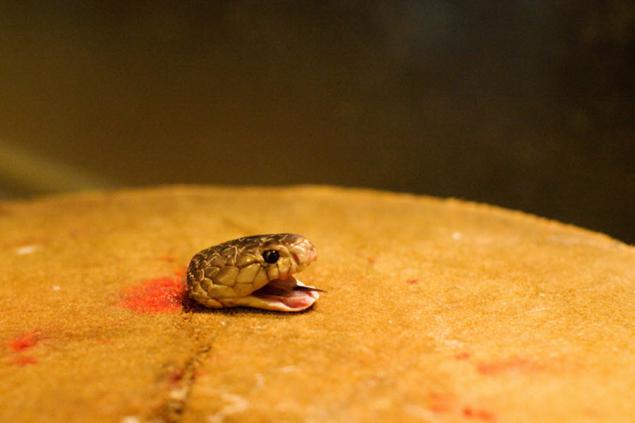
14. The relatively high value of wildlife and at the same time, an unprecedented demand for stimulating internal smuggling animals in southern China, especially in Guangdong and Guangxi. It Guangxi, which is considered one of the richest in China region's natural resources, is also the main channel for the transport of wild animals from Vietnam and southwestern China in Guangdong.
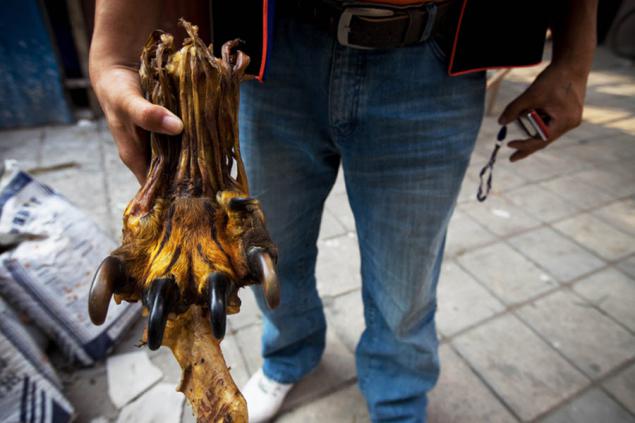
15. According to the calculation, the turnover of smuggling animals of the 90s in southern China is on average 35, 9 million. $ Per year. The following assessment of Guangdong: the way the contraband trade in animals are drawn to the province, where it is estimated the volume of trade amounts to an average of 30, 8 million. $ Per year.
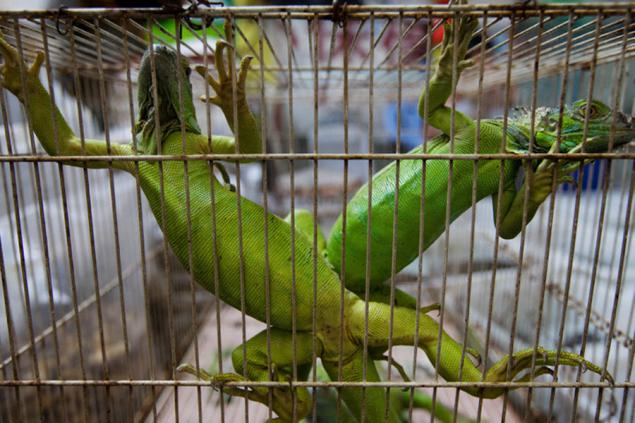
Source:
15 photos are not for the faint hearted, via bigpicture

2. Protection of wildlife includes, as one of the components, active measures for the control of wildlife trade and combating smuggling. Success in this area depends largely on concerted action at the international level.

3. Among the countries that are experiencing a massive uncontrolled trade in wild animals should be allocated to Vietnam.

4. In Hanoi, in the Chinese district of Lan Ong Street, many shops sell items of traditional Chinese medicine: in addition to herbs, you can buy a reindeer oil to treat back, skeletons of monkeys for the preparation of an analgesic, pangolin scales for the treatment of skin and dried geckos as a means to increase potency (aphrodisiacs).

5. Beach coast, such as Vung Tau, at the weekend visited by foreign guests. Kiosks along the coast, sell a variety of products and handicrafts to tourists. In Vung Tau anyone can buy a pig tooth (0, $ 3 for each), tortoiseshell bracelets (7 $), tiger claws with silver buckles ($ 10), whole tortoise shell ($ 26), stuffed pangolin ($ 30) stuffed turtles ($ 50) and tortoiseshell eyeglass frames ($ 50).

6. Chinatown Holon Ho Chi Minh City a significant number of Chinese traders are engaged in the sale of medical products, especially from the field of traditional Chinese pharmacology, and live animals and their products. Such shops Chinese are very similar to those found in other countries in Southeast Asia. In the area of Holon item comes a lot of buyers from China.

7. The exact prices for animals that are protected by the law is difficult to determine, since the transaction on the sale of protected species are secretive. The prices depend on the regularity of contacts between buyers and sellers, the market demand and the ability to bring down the price of the buyer. As a rule, the price of the animal almost doubled from the local border area to the mediator, then to the merchant or buyer in town.

8. In Nanning (the capital of Guangxi province) in the numerous restaurants offer visitors inexpensive dishes from exotic animals. These dishes are mostly meat aquatic lizards, Chinese Giant Salamander, pangolins, snakes and turtles. These menus offer mostly businessmen and tourists from Guangdong and other provinces of China, as well as from Hong Kong and Taiwan.

9. Goods made of tortoiseshell, commonly seen in antique shops. Tortoiseshell in the form of raw materials are sourced from Singapore or Vietnam itself costs about $ 132 per 1 kg. The main buyers of such products are the Japanese, who are quite satisfied with the price. The hotel Ho Chi Minh stores selling a variety of number of fairly high quality goods from the shells of turtles.

10. Nevertheless, the smuggling of animals is often cut short, and the animals confiscated employees of state environmental organizations and services. However, the ability to gain control over the protection of animals, anti-poaching and smuggling can not be improved due to capacity constraints. A particular problem is the content of the confiscated animals: a shortage of specialists and funding of the animals produced in large quantities without a veterinary health inspection and quarantine period, there is no technical support and planning.

11. The most expensive animal products sold in health stores Holon, are not only rhino horn, and antler, tortoise-shell, tiger bones and teeth of pigs.

12. According to statistics, nearly a third of the offered dishes prepared from animals, under the protection of the law. The price of these meals is 20 times higher than usual.

13. In many street stalls also sell live animals, but mostly for the food. Often offer to buy porcupine, pangolin, mouse deer, wild boar, sambar deer and mongoose. For trade edible animals there is a special market Kho Pham Viet Chung. It is a six private booths; According to one owner of the stall, he sells daily up to 100 kilograms of venison.

14. The relatively high value of wildlife and at the same time, an unprecedented demand for stimulating internal smuggling animals in southern China, especially in Guangdong and Guangxi. It Guangxi, which is considered one of the richest in China region's natural resources, is also the main channel for the transport of wild animals from Vietnam and southwestern China in Guangdong.

15. According to the calculation, the turnover of smuggling animals of the 90s in southern China is on average 35, 9 million. $ Per year. The following assessment of Guangdong: the way the contraband trade in animals are drawn to the province, where it is estimated the volume of trade amounts to an average of 30, 8 million. $ Per year.

Source:








